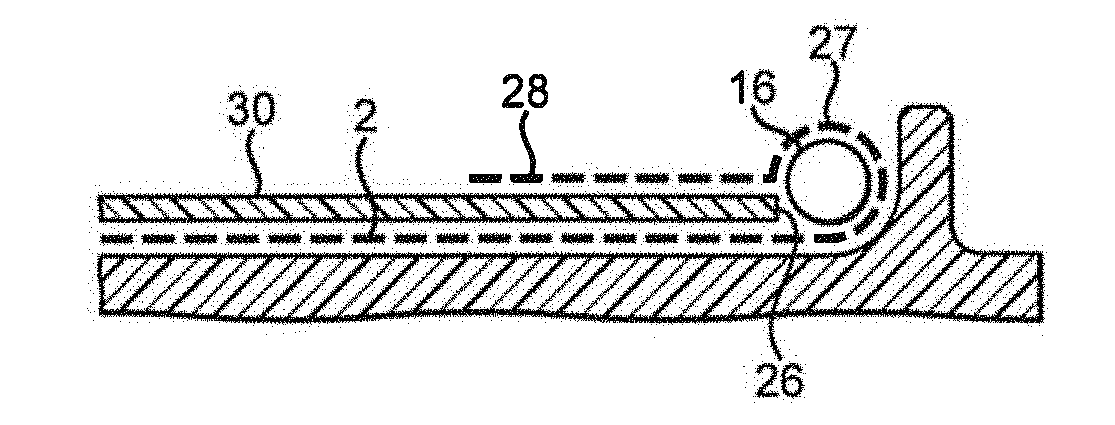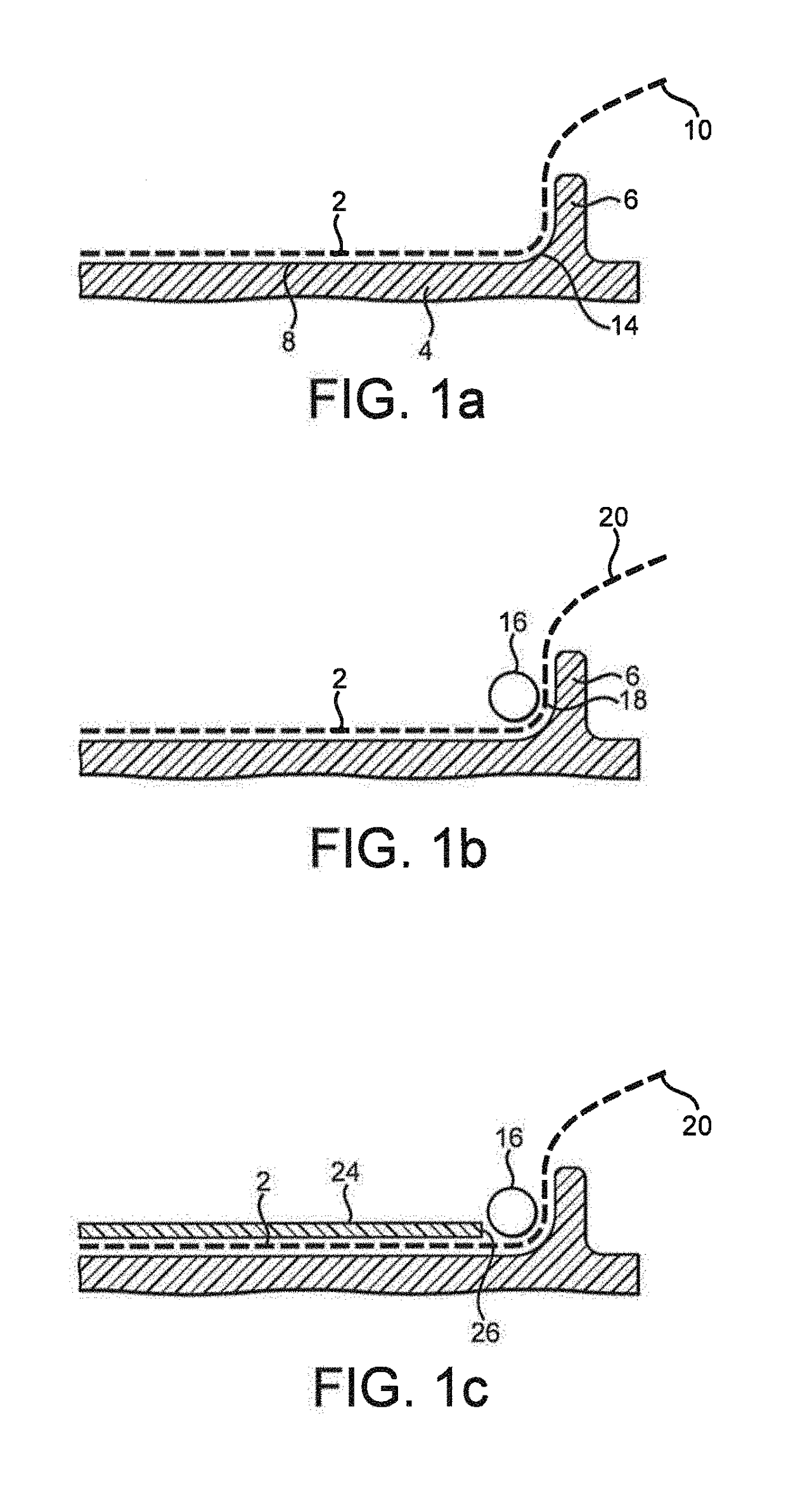Laminated Moulded Parts and Manufacture Thereof
a technology of laminated parts and manufacturing methods, applied in the direction of layered products, synthetic resin layered products, chemistry apparatus and processes, etc., can solve the problems of poor finish in the final lacquer coating of components, difficult control of moulding process, and difficult production of press-moulded net shape moulded parts from composite materials, etc., to achieve fast cure, high quality, and high quality a surface
- Summary
- Abstract
- Description
- Claims
- Application Information
AI Technical Summary
Benefits of technology
Problems solved by technology
Method used
Image
Examples
example 1
[0057]A cosmetic woven carbon component 1.2 m wide×1.1 m long with a nominal wall thickness of 1.27 mm was made by press moulding in a fixed cavity tool set Gurit SE160 and Gurit ST160 prepregs and a rope formed by winding three 24K dry carbon ends cut from a standard bobbin.
[0058]The first, second third and fourth plies, and the top, had the following properties as summarised in Table 1.
TABLE 1PlyProductProduct Description1PA13-SE160 / RC245T / 1250 / 245 gsm 3K Carbon 2 × 2621042% / POPATwill 0 / 90 woven 160 TgEpoxy prepreg with 42%resin content2SA23-ST160 / XC300C / 1270 / 300 gsm 12K Carbon Non643651% / S / SCrimp stitiched BiaxialPOPACarbon 160 Tg Epoxyprepreg with 42% resincontent2aThree 24K Carbon ends cut from a bobbin wereRopewound to form a rope by twisting the yarn oppositeInsertto that of the strand to form a stable rope3SA23-ST160 / XC300C / 1270 / 300 gsm 12K Carbon Non643651% / S / SCrimp stitiched BiaxialPOPACarbon 160 Tg Epoxyprepreg with 42% resincontent4PA13-SE160 / RC245T / 1250 / 245 gsm 3K Carbo...
example 2
[0063]The same components, preform mould and cure process were used as in Example 1 except that the carbon rope was replaced by a 3 mm diameter Vectran rope available for dingy and yachting rigging. Vectran is an aromatic polyester fibre available in commerce from Kuraray Co., Ltd. The rope was heat set for 30 min at 150° C. before use in order to increase its thermal stability. On demould a high visual quality was obtained in the majority of the part with a very minor aesthetic surface defect, still meeting the quality requirement, evident from approximately 2 mm of rope shrinkage.
PUM
| Property | Measurement | Unit |
|---|---|---|
| shrinkage | aaaaa | aaaaa |
| temperature | aaaaa | aaaaa |
| width | aaaaa | aaaaa |
Abstract
Description
Claims
Application Information
 Login to View More
Login to View More - R&D
- Intellectual Property
- Life Sciences
- Materials
- Tech Scout
- Unparalleled Data Quality
- Higher Quality Content
- 60% Fewer Hallucinations
Browse by: Latest US Patents, China's latest patents, Technical Efficacy Thesaurus, Application Domain, Technology Topic, Popular Technical Reports.
© 2025 PatSnap. All rights reserved.Legal|Privacy policy|Modern Slavery Act Transparency Statement|Sitemap|About US| Contact US: help@patsnap.com



